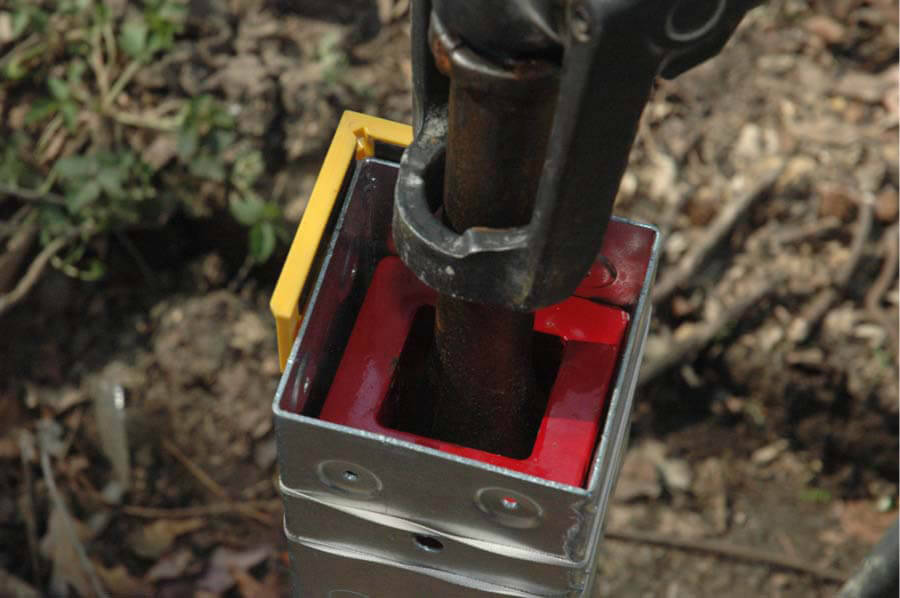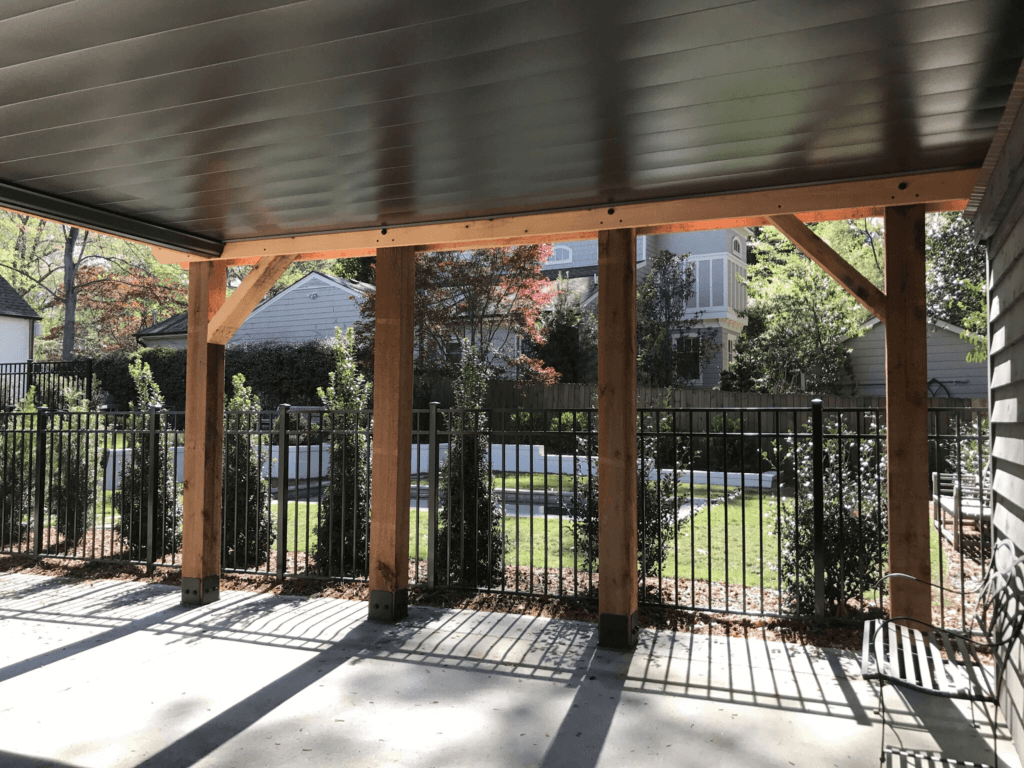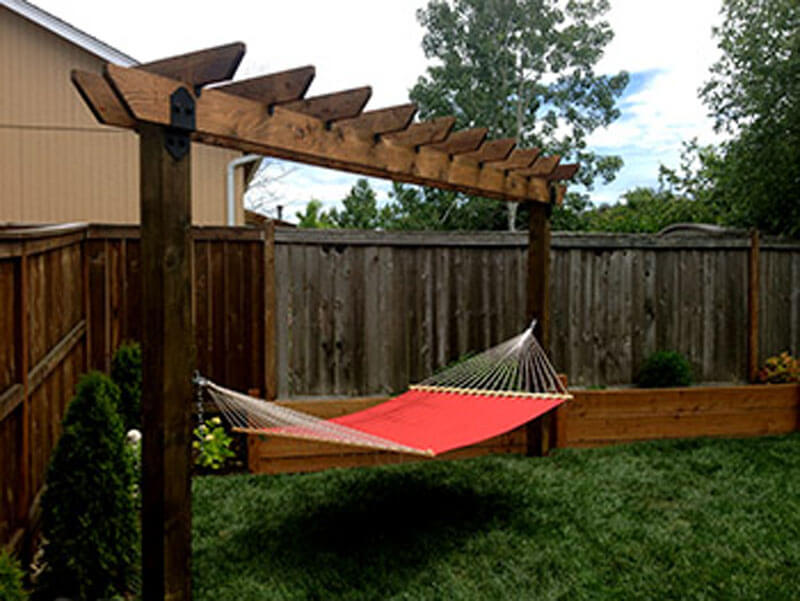Using Wood Post Anchors, Gravel, and Copper Naphthenate to Keep Your Fence Posts from Rotting
Remember that beautiful fence you installed a few years ago? It took a whole weekend, but every time you look at it, you’re filled with a sense of pride and accomplishment. So, when you notice that the carefully-installed wooden posts are starting to show signs of rotting, you can’t help but be upset.
There are few things more frustrating than spending time and energy on a project only to see it disintegrate, especially if you could have prevented it. Fortunately, there are several methods to keep your fence posts from rotting out without having to spend another weekend breaking your back.
What Are Wood Post Anchors?
Wood post anchors are specially-designed pieces of steel hardware that are driven into the ground to keep wood posts in place. Posts are inserted into the sleeve of the anchor, and the anchor is fastened to the post with screws. The anchor is designed to keep the wood post above ground, reducing the chances of rot and damage.
To protect the anchor from the elements and the corrosive effects of pressure-treated lumber, anchors are hot-dip galvanized.
Installing Wood Post Anchors
Wood post anchors can be installed in a few different ways:
- Sledgehammer. A scrap piece of wood can be inserted into the sleeve and then driven into the ground with a sledgehammer. This is the way to go if you only have a couple anchors to drive.
- Manual Driving Kit. A specially-designed manual driving kit inserts into the sleeve and is used to manually drive the anchor into the ground. This is easier than driving the anchors with a sledgehammer, so it’s a good choice if you plan to install fewer than six or so anchors.
- Jackhammer Driving Kit. This is the easiest method of driving the anchors into the ground, and is suggested if you plan to install more than six anchors (unless you’re really eager for that workout). A jackhammer driving kit can be purchased and inserted into an electrical jackhammer with a 1⅛” hex chisel holder with a retaining collar. You can often find electrical jackhammers for rent at hardware stores.
If necessary post anchors are also easy to remove when compared to a concrete plug. All you need is a six foot pry bar and a wood or concrete block for leverage. Place the bar under the housing, and with the block ten inches away from the anchor, lever the post out the ground. If that method is proving difficult or you want to pull a concrete plug out of the ground, you can buy a special puller from certain product distributors. Keeping the post plumb is also easy. Simply attach a post level onto the anchor and check for plumb for every inch that it is driven into the ground.
How Gravel Can Keep Your Post from Rotting
Crushed gravel lets water drain from around wooden posts, preventing rotting. This fill will also allow flexing under high winds and may help prevent the fence from breaking. However, it is more likely to need re-plumbing in the future compared to steel anchors or concrete.
Some people choose to mix dirt in with the gravel when they fill. This is generally fine, as long as the soil is not heavy with clay. Clay-heavy soil will inhibit water draining and cause rotting. If you decide to mix dirt with the gravel, use a looser, sandy dirt that will facilitate irrigation away from the post.
Installing a post using gravel is very similar to digging a hole and setting a post in concrete. The upside is that you can continue building the fence as soon as the gravel is poured and tamped. If the post needs to be removed, the gravel can be dug out and the post lifted out of the hole fairly easily.
How to Use Copper Naphthenate to Prevent Rotting
Copper naphthenate is a wood preservative used in outdoor lumber applications as an insecticide and water repellent. It is often used on pressure-treated wood as an added layer of protection before being inserted into the ground. Copper naphthenate solutions come in varying degrees of concentration and are available as water-based or oil-based solutions.
Initially, copper naphthenate was thought to be safe, but studies are starting to appear to contradict this. If you have other options that don’t require the use of copper naphthenate, such as anchors that keep wood above ground, it may be a good idea to utilize them to avoid the possibility of health and environmental complications.
But if you do choose to use copper naphthenate, the best way to apply it is with a brush or by dipping (with dipping being the preferred method if you want the solution to soak into the wood fibers).
Since it is made of copper, the solution is corrosive to metals in the same way that pressure–treated wood is corrosive. You’ll want to be sure to keep this in mind when using copper naphthenate in conjunction with metal hardware.
Choosing Your Anti-Rotting Solution
Using copper naphthenate and gravel for your posts are valid attempts at treating the rotting symptom, but the best thing to do is to keep posts above ground so rotting doesn’t happen in the first place. Post anchors are wind load-tested for privacy fencing at 120 mph, so the convenience doesn’t come at the cost of quality.
Interested in giving post anchors a try? Take a look at the anchor and fastener selection at OZCO Building Products. We offer beautiful powder coated products and they’re all code permitted to use with ACQ treated wood.












Comment (1)
Thanks a lot for the great tips!
Here’s another one. If your fence is susceptible or already suffering from rot, adding plants and flowers to your landscaping scheme is not a good idea. You’ll want to get those out of the way of the fence. The moisture that these plants need to survive is the same moisture, which can be deadly for your fence.